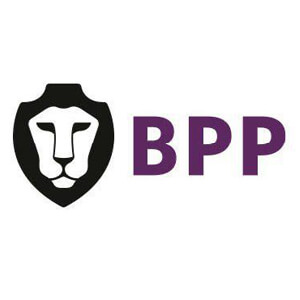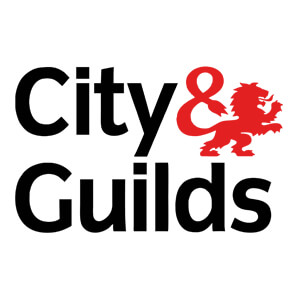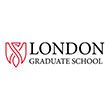Course Length
Intakes
Online Course 1st Monday of every month
Globally Recognised
Global Certification
€650.00 (Pre Recorded Class)
€650.00 (Online Live Class)






Overview
Retail Marketing Skills
To attract customers, a retail operation relies on marketing, the success of which relies on a plan. Writing the marketing plan requires three elements that should be focused on asfollows:
- Identification of the target market;
- Understanding buying habits and needs;
- Evaluating the strengths of the company with respect to satisfying the target customer.
A well devised marketing plan will benefit a retail business in several ways such as;
- Helping in identifying the needs and wants of consumers;
Determining the demand for a product; - Helping in the design of products that fulfil consumers needs;
- Identifying competitors and analysing the product’s or firm’s competitive advantage;
- Identifying new product areas;
- Identifying new and/or potential customers;
- Performing tests to check if strategies are giving the desired results.
Learning Outcomes:
- Marketing Orientation
- Consumer Behaviour
- Target Marketing
- Brand Management
- Marketing Communications
- Retail Marketing Mix
Competitive Advantage through HR Retail management
Building a sustainable competitive advantage has become imperative for the survival of retailers in today’s global economy. The values of the company and the culture that it creates go forward to create the spirit of enterprise which is an integral part of the organisation. Talent acquisition and talent management have thus become a core focus of many retail organisations. Considering that retailerstoday operate multiple business models and there israpid expansion across cultural boundaries, it becomes imperative for retailers to create a superior store experience for consumersto increase sales and customer loyalty. They must do so, however, without increasing their overall labour costs.
Learning Outcomes:
- Human Resource Management in Retailing
- Identifying the various roles in the organisation
- Recruitment and Selection
- Training and Employee Motivation
- Performance management
Retail Merchandising
Retail Merchandising refers to the various activities which contribute to the sale of products to the consumers for their end use. Every retail store has its own line of merchandise to offer to their customers. The display of the merchandise plays an important role in attracting the customers into the store and prompting them to purchase as well.
The theory discussed will help all those engaged in retail industry, such as medium and small scale businessmen, merchandisers, advertisers and any individual requiring a thorough knowledge on retail merchandising.
Learning Outcomes:
- Retailing Strategy
- Visual Merchandising
- Planning
- Non-Store Merchandising
Importance of Retail Purchasing
Buying for retail is a demanding and challenging job that requires a creative flair, a strong awareness of fashion trends, life trends as well as good interpersonal and team working skills. Buyers and merchandisers have to ensure that the right merchandise is sent to the right stores, at the right time and in the right quantities. This takes a blend of forward planning and rapid response to consumer demands.
In combination with the other areas ofthe business,success comesfrom maximising profit, which is achieved by anticipating customer needs and responding rapidly to immediate issues. It involves complex data analysis, liaison with the stores operation teams and balancing store stock levels.
Learning Outcomes:
- Duties and Responsibilities of Buyers
- The Aspects for a Buying Career
- Planning
- The Value Chain
- Evaluation of Buyers
Store Planning on Retail Performance
A store today can offerthe best products available at unbeatable prices, but will not make a single sale unless it gets people in through the door. This is why a store’s design and atmosphere is important to the success of a business. In order to survive in a world of big-name chain retailers, a business must be visually appealing from the inside as well as the outside.
Retail design is a creative and commercial discipline that combines several different areas of expertise together in the design and construction of retailspace. It is a much specialised discipline due to the heavy demands placed on retail space.
The primary purpose of retailspace isto stock and sell product to consumerstherefore the spaces must be designed in a way that promotes an enjoyable and hassle-free shopping experience for the consumer.
Learning Outcomes:
- Store Formats
- Store Exterior
- Store Interior
- Landscaping
Use of Information Technology
The survival of the retail industry lies on margins with managers who are continuously struggling to increase revenue and decrease costs. Technology has been an area of intense focus in retail industries as a way to accomplish both goals. Improvements have been made in areas such as supply chain management, inventory management, customer experience, and loss prevention.
Information Technology (IT), permitting communication between people and devices anywhere and without cables, has enabled the dramatic transformation of business processes in the past, and continues to do so. Today, a new wave of opportunity exists for retail industries to improve margins through the use of this technology.
Retailers who take the greatest advantage of evolving technology stand to gain an edge overtheir competition by cutting costs, increasing revenue opportunities and being more responsive to their customers’ needs.
Learning Outcomes:
- Mobile POS
- Data Management
- Modules that support retail functions
- On-line Retailing
Retail Environment
When choosing target markets and developing their marketing mix, they must work with many variables in the broader marketing environment. This environment contains the factors ‘surrounding the organisation’. Therefore, to sustain itself through time, the organisation must achieve an appropriate ‘fit’ with the environment.
Learning Outcomes:
- Internal Environment Analysis
- Micro Environmental Analysis
- Macro Environment Analysis
- Responding to the Marketing Environment
Reviews

ACCA F1/FBT – Business and Technology

Financial Accounting (FA) - formerly F3

Certificate in Business

Management Accounting (MA) - formerly F2

Corporate and Business Law (LW) – formerly F4

Advanced Taxation (ATX) - formerly P6